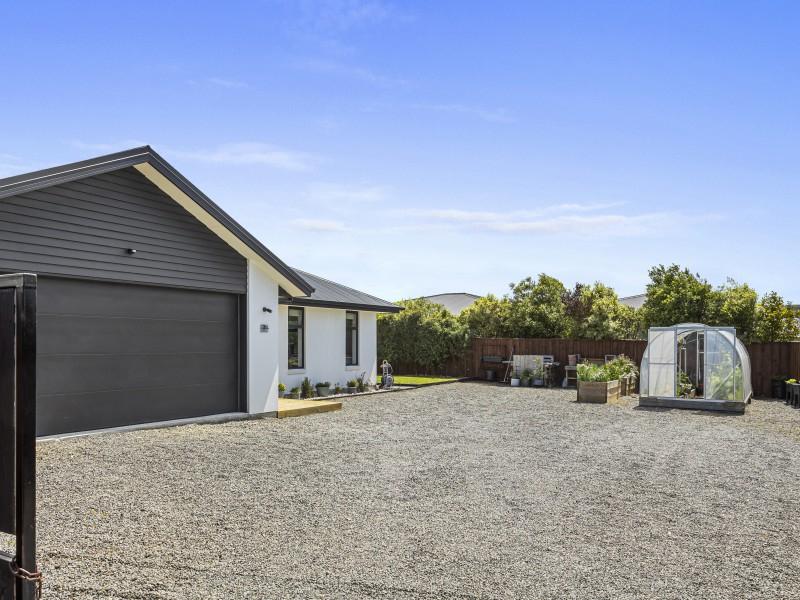Respite care ‘at or near full capacity’ in North Canterbury
By David Hill, Local Democracy Reporter
An aged care advocate has fired back at claims there are enough respite care beds in North Canterbury's rest homes.
The NZ Aged Care Association says it is concerned Te Whatu Ora Health NZ is passing respite care on to aged care facilities, which are not always equipped to deal with the demand.
Health NZ has confirmed it won't offer respite care at the Rangiora Health Hub after decommissioning four flexi-beds for the service.
A Health NZ spokesperson said respite care is offered by aged care facilities in North Canterbury, ‘‘where the appropriate level of care can be maintained’’.
The agency said it understood there were four aged care providers in Rangiora which offered respite care, while there are two providers in Kaiapoi.
But the New Zealand Aged Care Association said the claim there is adequate capacity within aged care facilities is ‘‘misleading’’.
‘‘While North Canterbury does have several aged care facilities, only one of these says it has a single bed dedicated to respite care.
‘‘Many of these providers are already operating at or near full capacity, and the availability of respite care is always conditional on beds being vacant between long-term residents.’’
Associate Health Minister Matt Doocey said the community needed reassurance services were available in North Canterbury.
He said he was disappointed to learn there was just one bed dedicated to respite care, despite assurances from Health NZ.
‘‘I will be approaching Health NZ to find out why this is the case and ask them to explain the situation.’’
Waimakariri mayor Dan Gordon said he was concerned to hear the number of respite beds available in Waimakariri is decreasing.
‘‘I will be looking into this. It seems families are having to navigate this issue at what is likely the worst time of their lives.
‘‘I would like to see something done to streamline or simply this process to ensure loved ones are able to remain close to family and in their communities at this final stage of life.’’
Information provided by the New Zealand Aged Care Association, and available on the Ministry of Health website, shows there are eight aged care facilities in Waimakariri which provide respite care, and two in the Hurunui district.
Three rural hospitals also provide respite care.
There are different types of respite care, including ACC, rest-home, hospital, palliative, dementia and end of life care, with aged care facilities licensed for different types of care.
Health NZ regional manager ageing well Mardi Fitzgibbon said respite care is funded by Health NZ and is allocated by the Needs Assessment Service (NASC) following a review of the person’s needs.
"It is generally provided up to 28 days per year, to give the person’s main carer a break.
"The level of respite is need dependent and may be for rest home, hospital or dementia levels of care."
It can also be funded through other agencies such as ACC, or families can make private arrangements.
Bainswood on Victoria home manager Lucy Farley said the process of applying for respite care can be complex.
‘‘It can be a minefield for people, particularly when they are going through this big life change.’’
Palliative care can be available for younger people and end of life respite care is also available, she said.
Charles Upham Retirement Village manager David Cartwright said the village has 120 care beds for both short and long term care, but availability cannot be guaranteed.
‘‘Unlike a hotel, we may have a resident who comes in for 14 days, but they may be up and fit after seven days, or they may need 21 days, so it can be very difficult to try to allocate beds.’’
Holmwood Rangiora Lifecare care home manager Elsie Evans said a needs assessment is completed before a resident is admitted.
But the ability to offer respite care is subject to beds and staff being available.
■ Respite care is also available at Bainlea House and Ballarat Care Home (Rangiora), Annaliese Haven Rest Home (Kaiapoi), Ultimate Care Karaden (Oxford), Oxford Hospital, Bloomfields Court Retirement Village (Woodend), Adriel Resthome (Amberley), Amberley Resthome and Retirement Village, Waikari Hospital and Te Hā o Te Ora Kaikōura Health.
■ LDR is local body journalism co-funded by RNZ and NZ On Air.
⚠️ DOGS DIE IN HOT CARS. If you love them, don't leave them. ⚠️
It's a message we share time and time again, and this year, we're calling on you to help us spread that message further.
Did you know that calls to SPCA about dogs left inside hot cars made up a whopping 11% of all welfare calls last summer? This is a completely preventable issue, and one which is causing hundreds of dogs (often loved pets) to suffer.
Here are some quick facts to share with the dog owners in your life:
👉 The temperature inside a car can heat to over 50°C in less than 15 minutes.
👉 Parking in the shade and cracking windows does little to help on a warm day. Dogs rely on panting to keep cool, which they can't do in a hot car.
👉 This puts dogs at a high risk of heatstroke - a serious condition for dogs, with a mortality rate between 39%-50%.
👉 It is an offence under the Animal Welfare Act to leave a dog in a hot vehicle if they are showing signs of heat stress. You can be fined, and prosecuted.
SPCA has created downloadable resources to help you spread the message even further. Posters, a flyer, and a social media tile can be downloaded from our website here: www.spca.nz...
We encourage you to use these - and ask your local businesses to display the posters if they can. Flyers can be kept in your car and handed out as needed.
This is a community problem, and one we cannot solve alone. Help us to prevent more tragedies this summer by sharing this post.
On behalf of the animals - thank you ❤️

Would you like a free copy of our February 2025 issue?
Kia ora neighbours. We give away free copies to readers whose recipes are used in our magazine. We're still on the hunt for tomato recipes, so send your family's favourite way to use up your homegrown harvest, to: mailbox@nzgardener.co.nz. If we use it in the mag, you will receive a free copy of the mag

On the range
Venetian plaster finishes are on-trend at the moment, so why not recreate this look at home and cover that unsightly rangehood at the same time? Find out how to create your own with Resene Sandtex and these easy step by step instructions.











 Loading…
Loading…





